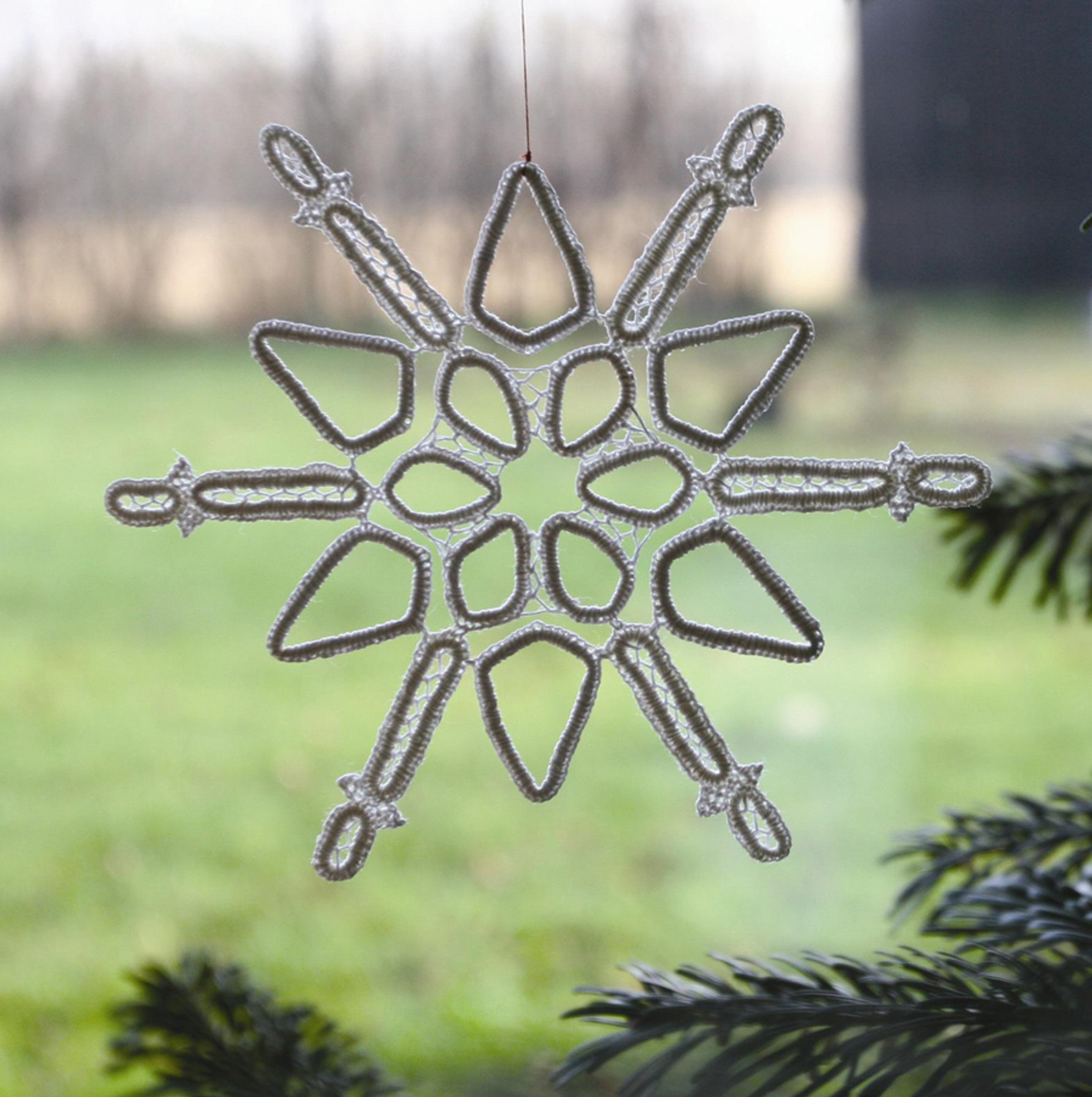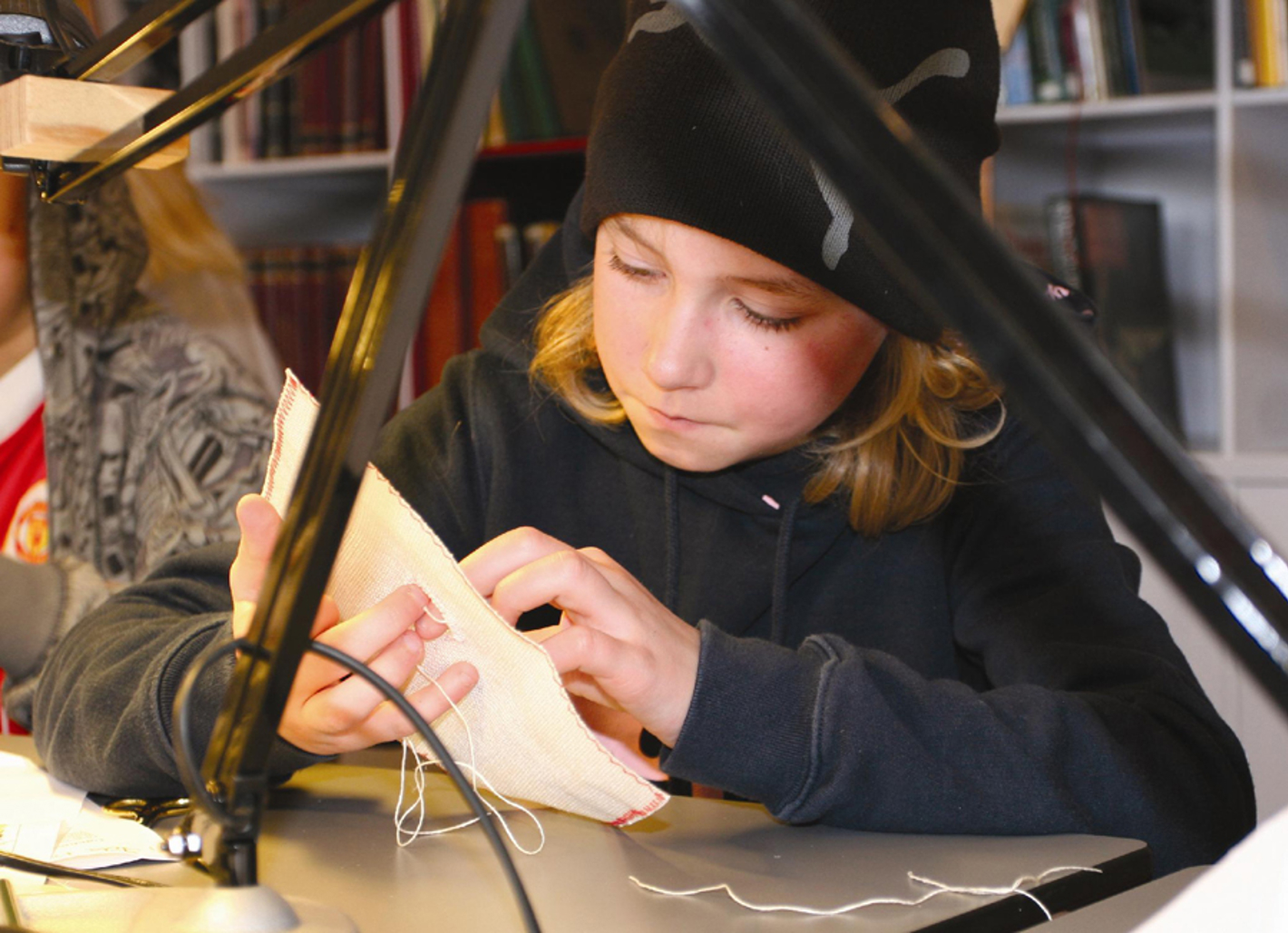Education and New Interpretation
The Teachers’ College for the Promotion of Handicrafts continues to teach students how to sew Hedebo Embroidery. Greve Museum provides lesson materials to the Danish public school system, ensuring that today’s children can experience these historical embroideries. Hedebo Embroidery has served as a bridge between Danish folk culture and the folk cultures brought to Denmark by people of different ethnic backgrounds. Contemporary Danish designers are still inspired by Hedebo Embroidery. For example, there are pottery and chairs that are clearly influenced by 'Udklipshedebo.' Textile designer Jytte Harboesgaard has renewed the expression of Hedebo Embroidery in works displayed at Greve Museum. The museum’s 2007 Christmas tree was adorned with Hedebo Embroidery ice crystals sewn by the museum’s study group. These are just a few of the many fresh interpretations that Greve Museum showcases.
Foreign Interest
Across the world, women’s groups are sitting and stitching Danish Hedebo Embroidery. In 2000, an exhibition featuring Hedebo Embroidery collars led to textile designer Jytte Harboesgaard being invited to teach the craft in New Zealand. In 2003, the Dutch magazine Handwerken zonder Grenzen published an article about Danish Hedebo Embroidery. The following year, a Japanese book on Danish Hedebo Embroidery was released, and the Japanese magazine Scandinavian Style visited Greve Museum and wrote about both the museum and Hedebo Embroidery. In Kyoto, Japan, the "Yuki Pallis Museum Collection" showcases Danish Hedebo Embroidery.
Travelling Exhibition
Since its opening in 1988, Greve Museum has conducted research into Hedebo Embroidery from both a cultural history and craftsmanship perspective. This research has led to the presentation of new and old perspectives on Hedebo Embroidery through books, articles, and exhibitions. The exhibition "Hedebo Embroidery – A World of Variations" fulfills the museum’s goal of continuing to share this beautiful part of the cultural heritage of this region of Denmark. At the same time, we aim to offer other museums in Denmark and abroad the opportunity to present Hedebo Embroidery to their audiences - embroidery once considered the true art of the Danish people, inspired by a long European tradition of white embroidery

